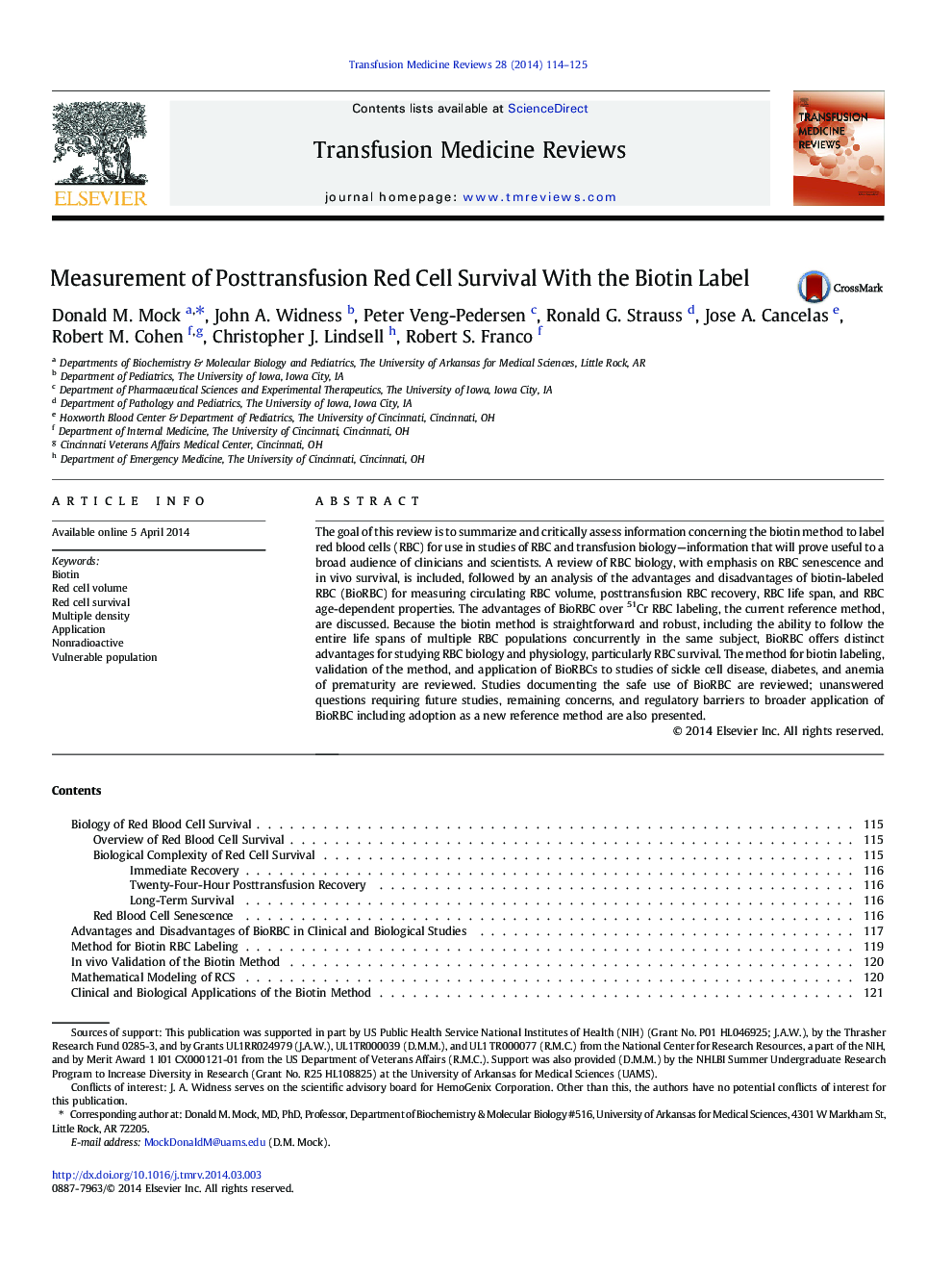| Article ID | Journal | Published Year | Pages | File Type |
|---|---|---|---|---|
| 3336579 | Transfusion Medicine Reviews | 2014 | 12 Pages |
The goal of this review is to summarize and critically assess information concerning the biotin method to label red blood cells (RBC) for use in studies of RBC and transfusion biology—information that will prove useful to a broad audience of clinicians and scientists. A review of RBC biology, with emphasis on RBC senescence and in vivo survival, is included, followed by an analysis of the advantages and disadvantages of biotin-labeled RBC (BioRBC) for measuring circulating RBC volume, posttransfusion RBC recovery, RBC life span, and RBC age-dependent properties. The advantages of BioRBC over 51Cr RBC labeling, the current reference method, are discussed. Because the biotin method is straightforward and robust, including the ability to follow the entire life spans of multiple RBC populations concurrently in the same subject, BioRBC offers distinct advantages for studying RBC biology and physiology, particularly RBC survival. The method for biotin labeling, validation of the method, and application of BioRBCs to studies of sickle cell disease, diabetes, and anemia of prematurity are reviewed. Studies documenting the safe use of BioRBC are reviewed; unanswered questions requiring future studies, remaining concerns, and regulatory barriers to broader application of BioRBC including adoption as a new reference method are also presented.
